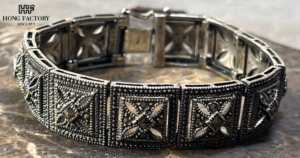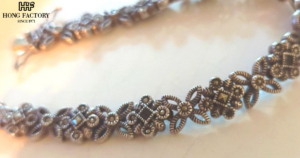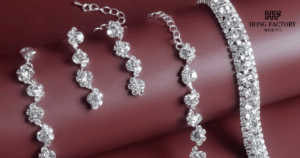For jewelry brands and retailers, one key question often arises: Should you focus on selling complete sets or individual pieces? The answer depends on your business goals, audience behavior, and product strategy. Jewelry Sets
Both approaches offer unique benefits and challenges. In this guide, we break down the pros and cons of each model, real-world examples, and how to decide which strategy is right for your brand or whether a hybrid approach works best.
Should You Sell Jewelry Sets or Individual Pieces?
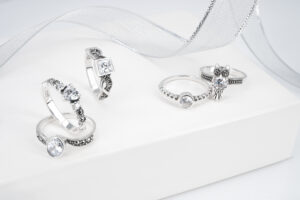
What Are Jewelry Sets vs. Individual Pieces?
- Jewelry Sets: Coordinated collections of two or more items, typically including a combination of earrings, necklaces, rings, and bracelets, designed to be worn together.
- Individual Pieces: Standalone items sold separately, often intended to be mixed, matched, or layered based on personal style.
The Case for Selling Jewelry Sets
1. Higher Average Order Value (AOV)
Sets naturally encourage customers to buy more in one transaction.
- Boosts total purchase value
- Increases return on ad spend (ROAS)
- Simplifies upselling and cross-selling
2. Easier Gifting Solution
Buyers seeking a gift often prefer sets that look complete.
- Ideal for holidays, birthdays, and weddings
- Reduces decision fatigue
- Often perceived as more thoughtful or premium
3. Cohesive Visual Styling
Sets create a polished, put-together look that appeals to shoppers who want style guidance.
- Great for photography and social media
- Useful for look books, campaigns, and influencer content
4. Ideal for Special Collections
If you’re releasing a themed line or capsule (e.g., bridal, celestial, birthstones), sets offer a way to:
- Tell a unified story
- Create colle ctibility
- Drive seasonal or event-based urgency
5. Easier Inventory Management (Sometimes)
Bundling slower-moving items with best-sellers can balance inventory flow.
- Moves stock more efficiently
- Reduces isolated SKU build-up
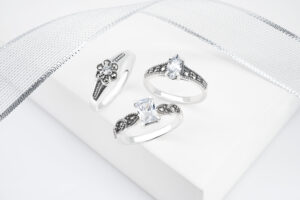
Downsides of Selling Only Jewelry Sets
1. Higher Price Point Barrier
Some customers may hesitate to purchase an entire set upfront.
- Especially true for younger or budget-conscious shoppers
- May reduce impulse buys
2. Limited Flexibility for Customers
Not every customer wants every piece in a set.
- Earrings may be unwanted in a necklace-heavy wardrobe
- Ring sizes can complicate bundled sales
3. Returns Are More Complex
If one item in the set is damaged or disliked:
- The entire set may be returned
- Or customers may ask to return/exchange individual parts
The Case for Selling Individual Pieces
1. Lower Entry Price Point
Selling standalone items allows shoppers to try your brand with minimal risk.
- Encourages first-time buyers
- Enables ongoing purchases over time
2. Personal Style Customization
Customers can mix and match based on preference.
- Appeals to Gen Z and Millennials who love self-styling
- Fits layered and stackable trends
3. Simplified Returns & Inventory
Fewer packaging and sizing complexities.
- Easier to manage product listings
- Simpler return and exchange processes
4. Content and Collection Agility
You can release and market one piece at a time.
- Keeps content calendar fresh
- Enables staggered launches and teaser campaigns
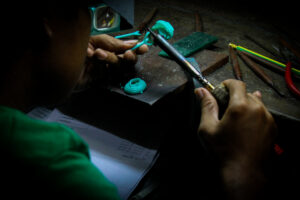
Downsides of Selling Only Individual Pieces
1. Missed Upsell Opportunities
No natural way to guide customers toward coordinating items.
- Lower cart size on average
- More reliance on manual upsell strategies
2. Visual Styling Challenges
It’s harder to present a cohesive aesthetic in photos or display.
- Requires more styling effort for shoots
- May feel scattered without a central story
3. Decision Fatigue for Customers
Too many choices can overwhelm buyers.
- Some shoppers want plug-and-play solutions
- May leave with fewer items or none at all
The Best of Both Worlds: A Hybrid Model
Many brands successfully combine both approaches:
- Offer core items as standalone pieces
- Bundle best-sellers into themed sets (with a slight discount)
- Allow customization within a set (e.g., “choose your ring size” or “swap for earrings”)
Strategic Options:
- Gift Sets during peak seasons (Mother’s Day, Christmas, Valentine’s Day)
- Build-Your-Own Sets via website configurators
- Pre-Styled Looks curated by stylists or influencers
This lets you:
- Increase AOV
- Reduce friction
- Maintain flexibility
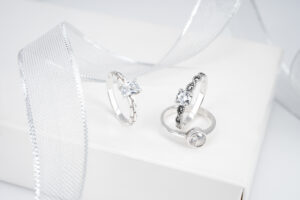
Real-World Example
A silver jewelry brand launched a “Celestial Set” with a moon necklace, star earrings, and a constellation ring. Results:
- Set sold 30% faster than individual SKUs
- 60% of customers who bought the ring later returned for the other two
- Holiday bundles drove 45% of Q4 revenue
They now:
- Sell the items individually
- Offer the set at 15% off
- Include gift packaging for set orders
Know Your Customer and Your Strategy
Should you sell sets or individual pieces? The answer isn’t one-size-fits-all. It depends on:
- Your audience demographics and buying habits
- Your average order goals
- Your inventory and logistics capacity
Tip: Start with individual pieces. Then track which ones customers pair naturally—and offer those as a set.
When used strategically, jewelry sets increase value, deepen brand storytelling, and simplify purchasing. But individual pieces offer flexibility, accessibility, and long-term relationship building. In short: Do both intentionally.

